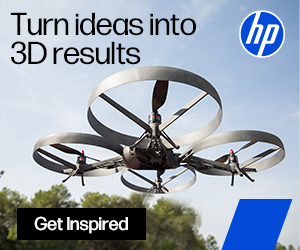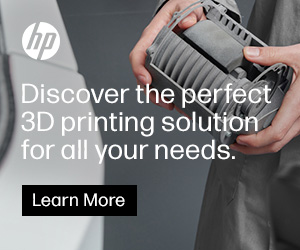3D Printed Sugar Scaffolds Could Have an Impact on Bioprinting and Microfluidics
The water-soluble, biodegradable isomalt can be 3D printed using a technique called free-form 3D printing, which is essentially drawing in midair – the sugar hardens as the air hits it, allowing it to hold its structure without another layer immediately beneath it. This enables the engineers to print delicate networks of filaments, rather than solid objects.
“This is a great way to create shapes around which we can pattern soft materials or grow cells and tissue, then the scaffold dissolves away,” said Rohit Bhargava, a Professor of Bioengineering and Director of the Cancer Center at the University of Illinois. “For example, one possible application is to grow tissue or study tumors in the lab. Cell cultures are usually done on flat dishes. That gives us some characteristics of the cells, but it’s not a very dynamic way to look at how a system actually functions in the body. In the body, there are well-defined shapes, and shape and function are very closely related.”
Sugar has been 3D printed before, but it’s prone to burning or crystallizing. Isomalt is less so, as is explained in a paper entitled “Model-guided design and characterization of a high-precision 3D printing process for carbohydrate glass,” which you can access here. The researchers built a special 3D printer that had the right temperature, nozzle pressure and diameter, and speed to print the material smoothly.

Rohit Bhargava, professor of bioengineering (left) and Matt Gelber, graduate student [Image: L. Brian Stauffer]
“After the materials and the mechanics, the third component was computer science,” said Matthew Gelber, recent PhD graduate and first author of the paper. “You have a design of a thing you want to make; how do you tell the printer to make it? How do you figure out the sequence to print all these intersecting filaments so it doesn’t collapse?”
The University of Illinois researchers partnered with Greg Hurst of Wolfram Research to create an algorithm for designing scaffolds and mapping out printing pathways.
An advantage to 3D printed free-form structures is that they can make thin tubes with circular cross-sections, which is not possible with conventional 3D printing. When the sugar dissolves, it leaves behind connected cylindrical tubes and tunnels that can act like blood vessels, transporting nutrients in tissue or creating channels in microfluidic devices. In addition, the mechanical properties of each part of the object can be precisely controlled by making slight changes in the 3D printer parameters.“For example, we printed a bunny. We could, in principle, change the mechanical properties of the tail of the bunny to be different from the back of the bunny, and yet be different from the ears,” Bhargava said. “This is very important biologically. In layer-by-layer printing, you have the same material and you’re depositing the same amount, so it’s very difficult to adjust the mechanical properties.”
Bhargava and his group are using the sugar scaffolds in a variety of microfluidic devices and cell cultures, and working to create a coating for the scaffolds to control how quickly they dissolve. The recently published paper is part of a series of publications based on Gelber’s thesis work, which focuses on how to build the special 3D printer and create the algorithms needed to operate it. The researchers hope that others can use their models to build printers and explore different applications for isomalt structures.
“This printer is an example of engineering that has long-term implications for biological research,” Bhargava said. “This is fundamental engineering coming together with materials science and computer science to make a useful device for biomedical applications.”
Discuss this and other 3D printing topics at 3DPrintBoard.com or share your thoughts in the comments below.
[Source: University of Illinois]
Subscribe to Our Email Newsletter
Stay up-to-date on all the latest news from the 3D printing industry and receive information and offers from third party vendors.
Print Services
You May Also Like
RAPID 2025: Stratasys & trinckle Announce Strategic Software Partnership
News continues to flood in from last week’s RAPID+TCT 2025, including a new partnership between AM market leader Stratasys and Berlin-based software company trinckle. By automating important steps in fixture...
RAPID TCT 2025: Spring in the Paris of the Midwest
I’m going to go out on a limb here and say that whomever coined the phrase Detroit: Paris of the Midwest, had not spent a lot of time in Paris...
3D Printing Financials: 3D Systems Looks to Bounce Back in 2025
After a challenging year for the industry, 3D Systems (NYSE: DDD) ended 2024 with results pointing to a reset, laying the groundwork for future profitability. The company didn’t post strong...
Printing Money Episode 27: Q4 2024 Public 3D Printing Earnings Review with Troy Jensen, Cantor Fitzgerald
Q2 2025 has already begun, but public markets reporting has only just finished with Q4 2024. To tie a bow on Q4 2024, we are thankful to have Troy Jensen...



























